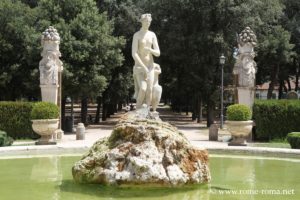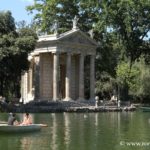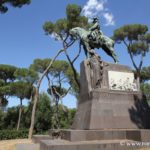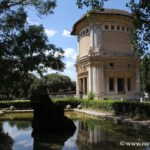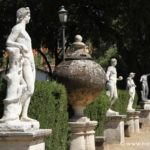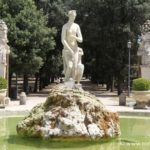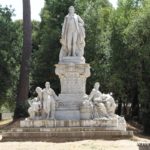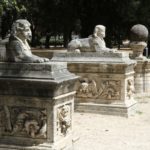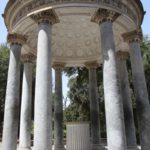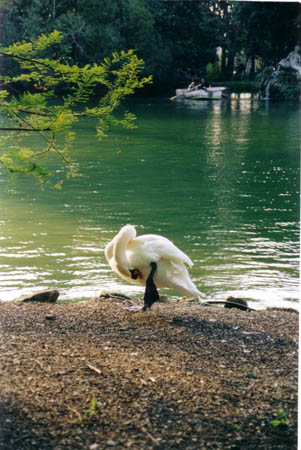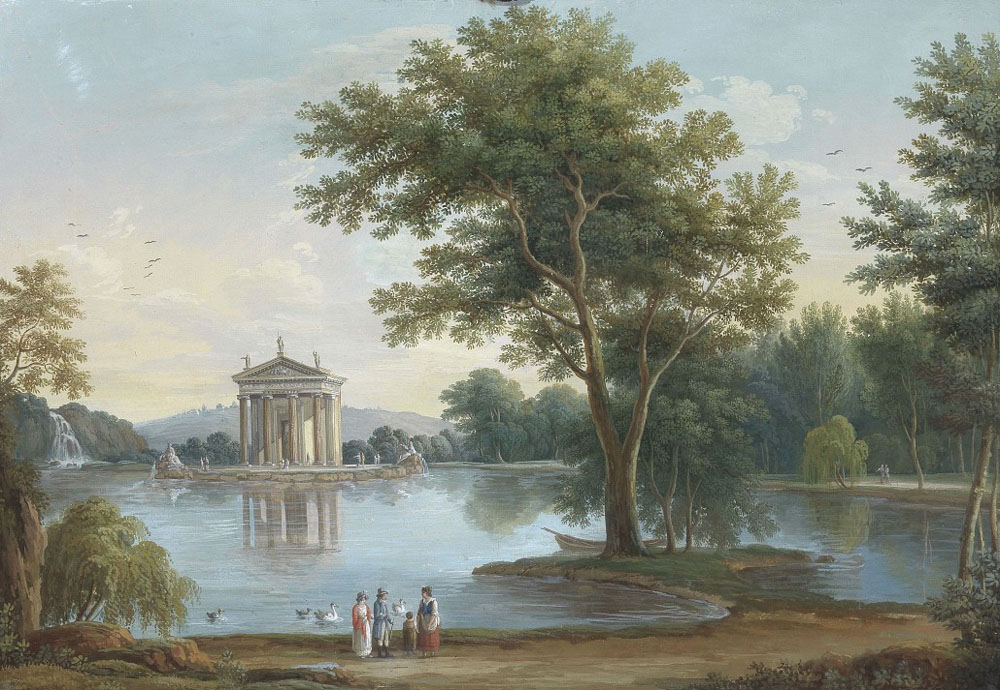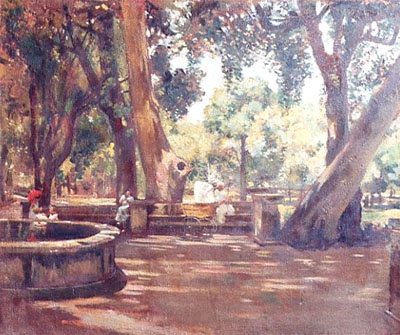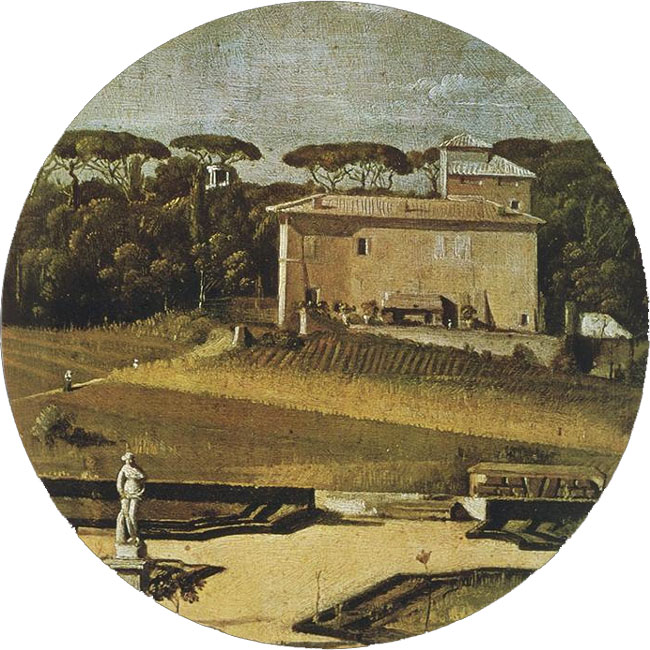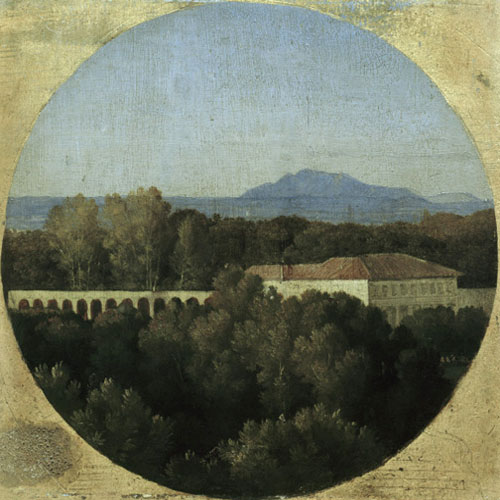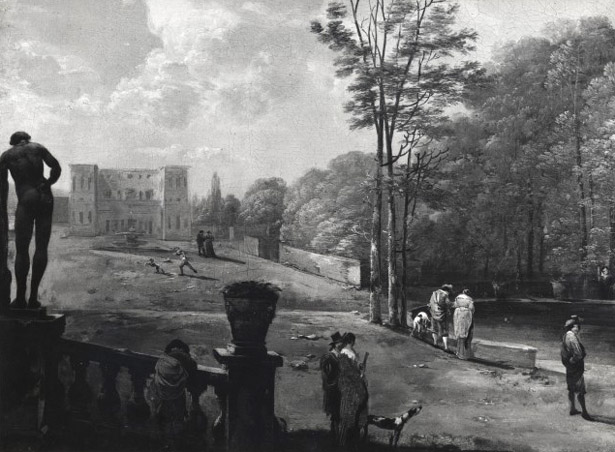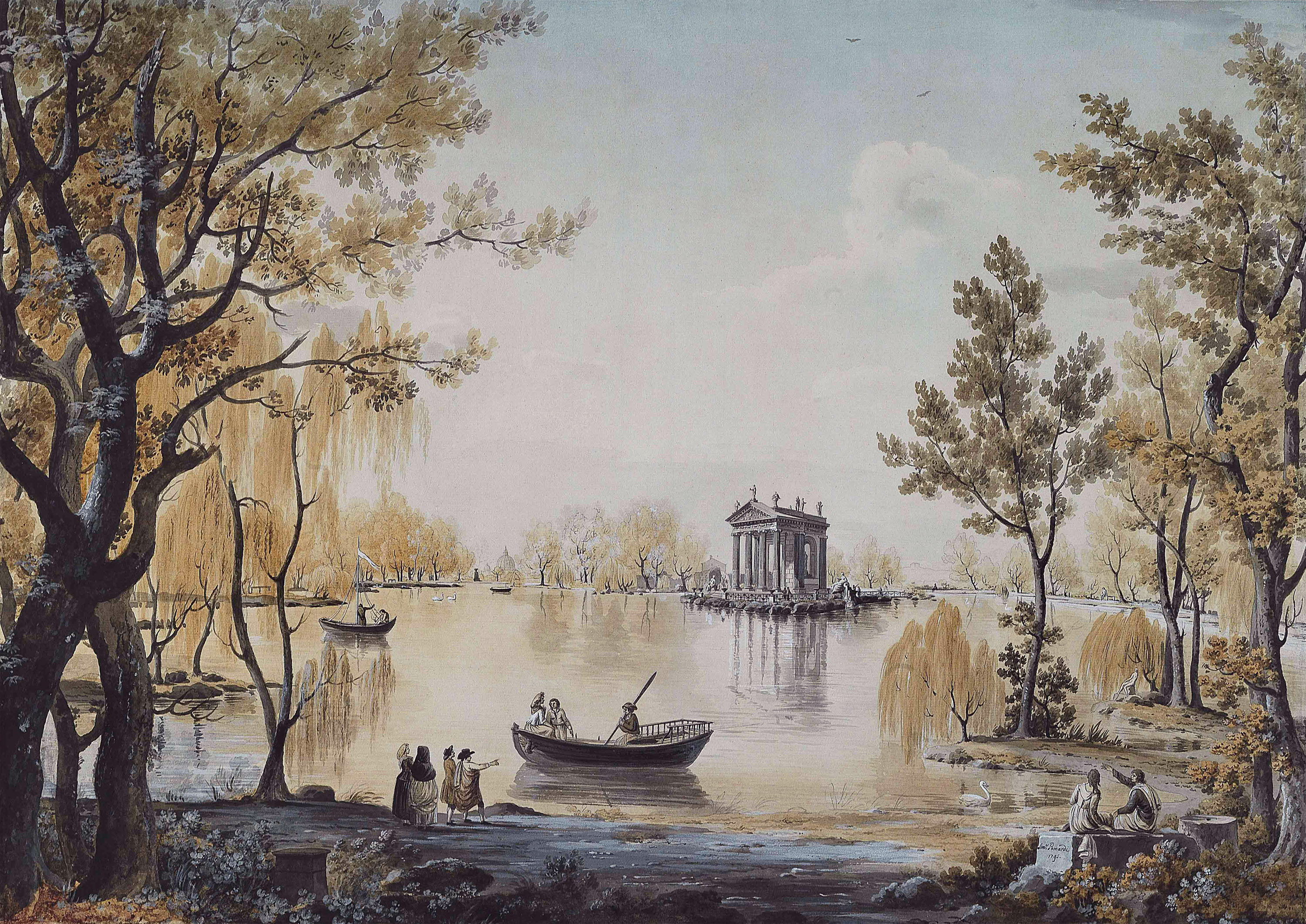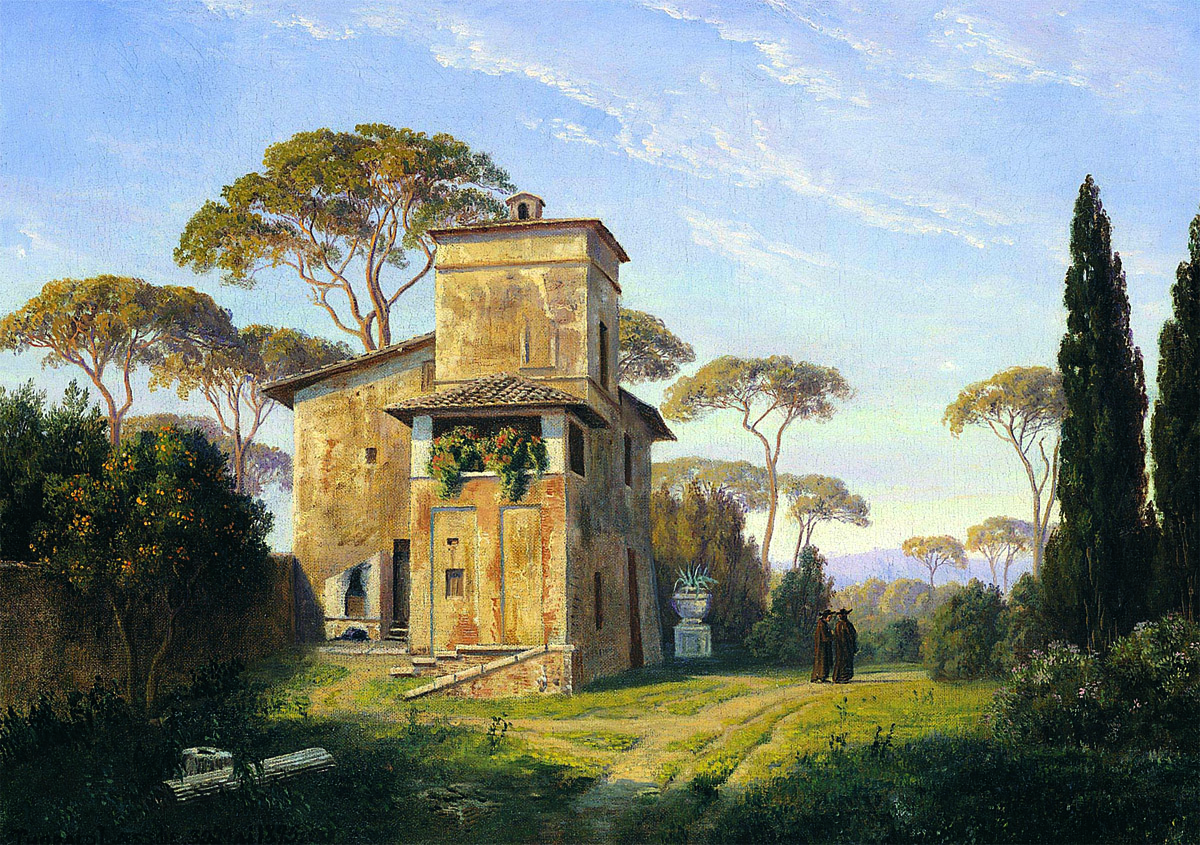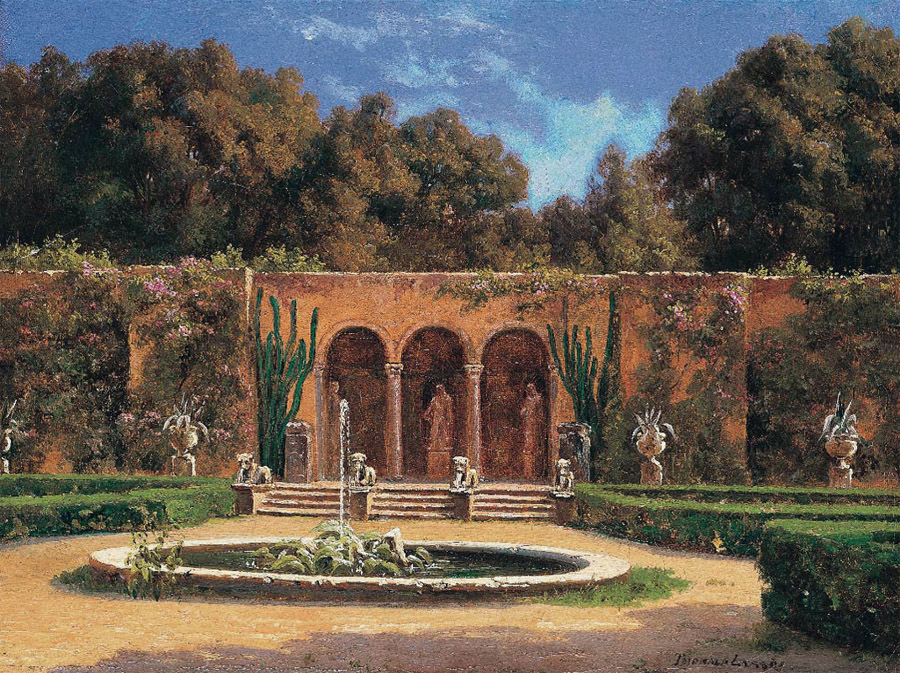The Villa Borghese Park covers a large area in the northern part of Rome’s historic center. Carefully landscaped, it is one of the most pleasant places in the city to relax, to explore on foot, by bicycle, or even on four-seater bikes.
This villa was created in the 17th century by Cardinal Scipione Borghese and acquired in 1903 by the Italian State to be turned into a public park. Among its centuries-old trees, small lakes, gardens, wide avenues, and meadows, the park also features palaces, sculptures, monuments, and refined fountains, created by artists of Baroque, Neoclassical, and other artistic movements, such as Canova.
It houses the Casino Nobile and the famous Borghese Gallery, renowned for its artistic masterpieces including Caravaggio paintings and Bernini sculptures.
Among its iconic sites are the Temple of Aesculapius by a lake and secret gardens such as the Giardino della Meridiana.
Must-see attractions in Villa Borghese Park:
- Borghese Gallery: a major art museum housing works by Caravaggio, Bernini, and Raphael.
- Giardino del Lago and Temple of Aesculapius: located on a small peaceful lake, with boat rentals, a neoclassical temple on a small island.
- Fountain of the Sea Horses: a spectacular fountain dating from 1791, depicting four horses emerging from the water.
- Egyptian Propylaea: monumental gates inspired by Egyptian architecture, dating from the 19th century.
- Casina Valadier: elegant neoclassical pavilion offering panoramic views of the city.
- Secret Garden: 17th-century Italian-style garden, calm and refined, ideal for a contemplative walk (reservation sometimes required)
Iconic locations in the park
Among the most charming spots is the Giardino del Lago (Lake Garden in English), where pedal boats or rowboats can be rented to get closer to the graceful Temple of Aesculapius in the middle of the water.
Other notable locations include the Meridiana (sundial), the Fountain of the Family of Satyrs, the Parco dei Daini (Fallow Deer Park), and the Secret Gardens, such as Giardino dell’Uccelliera (Aviary Garden), Giardino Vecchio (Old Garden), Giardino della Meridiana (Sundial Garden), and Giardino della Coltivazione (Cultivation Garden).
The Piazza di Siena features a hippodrome that hosts the famous International Horse Show as well as various events and concerts.
The Casino Borghese by Vasanzio houses the renowned Borghese Gallery, one of Rome’s major museums. The Fortezzuola (small fortress in English) hosts the Pietro Canonica Museum. Nearby are also the Villa Giulia Etruscan Museum, the National Gallery of Modern Art, and the Pincio Park, with its magnificent terrace overlooking Piazza del Popolo.
- Giardino del lago
- Giardino del lago
- Monument to Umberto I
- Parco dei Daini
- Piazzale Scipione Borghese
- Fontana di Venere, parco di Scipione Borghese
- Monument to Goethe
- Piazzale Scipione Borghese
- Temple of Diana
History of the park layout
Originally, the Villa Borghese estate was a modest plot acquired by the Borghese family in 1580. At the beginning of the 17th century, Cardinal Scipione Caffarelli Borghese, nephew of Pope Paul V, undertook a series of acquisitions of neighboring lands to create a “villa of delights,” symbolizing the family’s grandeur.
The first villa, designed by architects Flaminio Ponzio and Giovanni Vasanzio, was arranged according to classical tradition, with an urban section and a rustic section, divided into three “enclosures” marked by gates.
In the first, most representative enclosure were the Casino Nobile, intended to house an extensive art collection, numerous statues and fountains, and a wooded garden.
Despite some modifications, the geometric layout of this area remained unchanged.
The current Parco dei Daini corresponds to the second enclosure, a garden initially reserved for the prince. Between the first and second enclosures was the Secret Garden, including the small houses of the Aviary and the Sundial. The third, larger and more open enclosure underwent the most significant changes over time.
At the end of the 18th century, Marcantonio Borghese ordered embellishment works led by architects Antonio and Mario Asprucci, transforming the Casino Nobile, secondary buildings, and the park.
The most notable intervention was the creation of the Giardino del Lago (Lake Garden in English), an English-style garden introducing exotic species and a neoclassical temple. In the 19th century, the villa was expanded by adding the lands of the Villa Giustiniani near Porta del Popolo, and Villas Pamphili and Manfroni towards the Pincian Gate.
Works continued under the direction of Luigi Canina, adding eclectic and neoclassical elements to the park.
After its acquisition by the State in 1901, the villa underwent several modifications to adapt it for use as a public park. Since the end of World War II, restoration campaigns have preserved the original organization and ornaments of the park, marking a new era for this space, now both a place appreciated by Romans and visitors and a source of inspiration for artists, writers, and musicians.
Articles about the Villa Borghese
Articles about sites inside Villa Borghese
- Borghese Gallery
 The Borghese Gallery (“Galleria Borghese” in Italian) is located within the vast Villa Borghese Park, in a palace of the same name built in the ...
The Borghese Gallery (“Galleria Borghese” in Italian) is located within the vast Villa Borghese Park, in a palace of the same name built in the ... - Villa Borghese
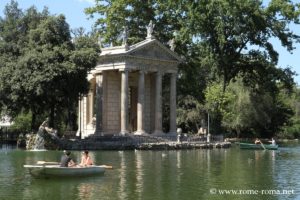 The Villa Borghese Park covers a large area in the northern part of Rome’s historic center. Carefully landscaped, it is one of the most pleasant ...
The Villa Borghese Park covers a large area in the northern part of Rome’s historic center. Carefully landscaped, it is one of the most pleasant ...
Ancient views in art
Map and address
Address : Piazzale Napoleone I, 00197 Roma RM, ItalieIf you see this after your page is loaded completely, leafletJS files are missing.
Information
| Villa Borghese Piazzale Napoleone I Entrances: Piazzale S. Paolo del Brasile, Piazzale Flaminio, Via di Porta Pinciana, Via Raimondi, Via di Valle Giulia |
Sources and links for more information
|

